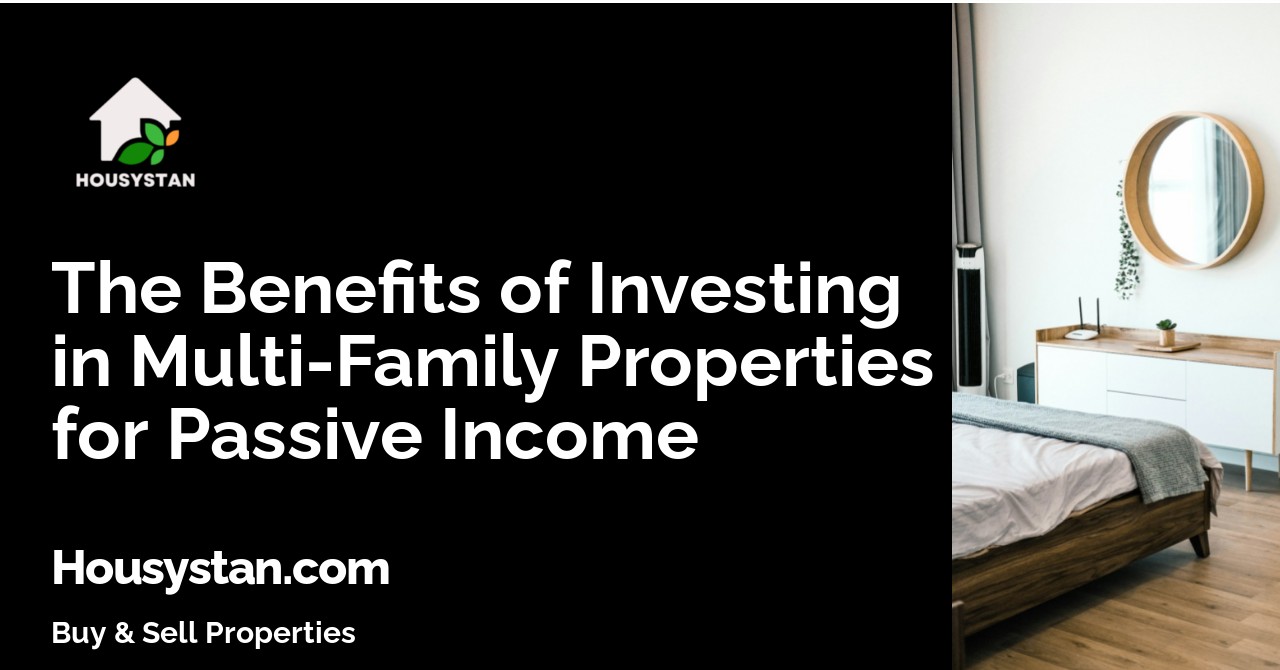The Benefits of Investing in Multi-Family Properties for Passive Income
Read latest blogs and articles from Housystan

The Information mentioned here was last updated on:
14/12/2025The Benefits of Investing in Multi-Family Properties for Passive Income
Investing in multi-family properties has become a preferred strategy for individuals seeking reliable passive income, especially in areas with growing populations and robust rental demand. These types of properties, which include apartment buildings, duplexes, and triplexes, offer numerous advantages for investors aiming to establish a steady revenue stream while building long-term wealth. By focusing on multi-family real estate in thriving metropolitan regions and emerging markets, investors can maximize returns and enjoy greater financial stability.
One of the most significant benefits of multi-family investments is the potential for consistent cash flow. Unlike single-family homes, which depend on a single tenant, multi-family units generate income from several renters. This diversification minimizes the risk of total vacancy and ensures ongoing rental payments, making it easier for landlords to cover expenses such as mortgage, maintenance, and property management fees. In high-demand cities, occupancy rates remain strong, which further enhances income reliability.
- Verified Tenants/Buyers
- Unlimited Property Listing
- Zero subscription/charges fee
Another key advantage is scalability. Purchasing a building with multiple units allows investors to grow their portfolios efficiently. Managing several apartments under one roof is more convenient and cost-effective than owning scattered single-family houses. When operating in dynamic locations, property values often appreciate faster, increasing both equity and rental rates. Additionally, economies of scale in maintenance, repairs, and management lead to increased net profits over time.
Investors also benefit from favorable tax treatment and depreciation deductions. Many cities and states offer incentives for property improvements and energy-efficient renovations, reducing tax burdens and boosting returns. By investing in multi-family properties within regions experiencing population growth, job creation, and infrastructure development, landlords can secure properties with strong appreciation prospects and high rental demand.
Furthermore, multi-family properties provide a hedge against market fluctuations. During economic downturns, demand for affordable rental housing typically rises, ensuring sustained occupancy. Choosing properties in stable or growing neighborhoods enhances security and long-term profitability. By leveraging professional property management services available in urban centers, investors can enjoy truly passive income while focusing on other pursuits or investments.
In summary, investing in multi-family properties is a strategic way to generate passive income, benefit from appreciation, and take advantage of tax breaks. Selecting properties in vibrant, high-growth regions ensures optimal returns and ongoing rental demand, making this approach ideal for both new and seasoned real estate investors.